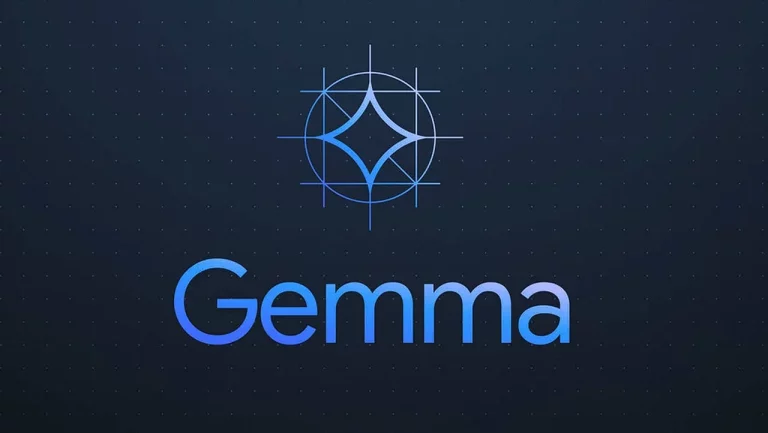Google has unveiled Gemma, a new open-source artificial intelligence model, marking a significant step in the tech giant’s AI development efforts. This model, which is available in two variants offering either 2 billion and 7 billion parameters AI models, is designed to rival the advanced AI technologies of competitors such as Meta. For those with a keen interest in the progression of AI, it’s crucial to grasp both the strengths and weaknesses of Gemma.
Gemma is a family of lightweight, state-of-the-art open models built from the same research and technology used to create the Gemini models. Developed by Google DeepMind and other teams across Google, Gemma is inspired by Gemini, and the name reflects the Latin gemma, meaning “precious stone.” Gemma is an evolution of Google’s Gemini models, which suggests it is built on a robust technological base. Gemma AI models provide a choice between 7B parameters, for efficient deployment and development on consumer-size GPU and TPU and 2B versions for CPU and on-device applications. Both come in base and instruction-tuned variants.
However, the sheer size of the model has raised questions about its practicality for individuals who wish to operate it on personal systems. Performance benchmarks have indicated that Gemma might lag behind other models like Llama 2 in terms of speed and accuracy, especially in real-world applications. One of the commendable aspects of Gemma is its availability on platforms such as Hugging Face and Google Colab. This strategic move by Google encourages a culture of experimentation and further development within the AI community. By making Gemma accessible, a wider range of users can engage with the model, potentially accelerating its improvement and adaptation.
Google Gemma results tested
Here are some other articles you may find of interest on the subject of Google Gemma :
Despite the accessibility, Gemma has faced criticism from some quarters. Users have pointed out issues with the model’s performance, particularly regarding its speed and accuracy. Moreover, there are concerns about the extent of censorship in Google’s AI models, including Gemma. This could lead to a user experience that may not measure up to that offered by less restrictive competitors.
Gemma AI features :
- Google Open Source AI:
- Gemma is a new generation of open models introduced by Google, designed to assist developers and researchers in building AI responsibly.
- It is a family of lightweight, state-of-the-art models developed by Google DeepMind and other Google teams, inspired by the Gemini models.
- The name “Gemma” reflects the Latin “gemma,” meaning “precious stone.”
- Key Features of Gemma Models:
- Model Variants: Two sizes are available, Gemma 2B and Gemma 7B, each with pre-trained and instruction-tuned variants.
- Responsible AI Toolkit: A toolkit providing guidance and tools for creating safer AI applications with Gemma.
- Framework Compatibility: Supports inference and supervised fine-tuning across major frameworks like JAX, PyTorch, and TensorFlow through native Keras 3.0.
- Accessibility: Ready-to-use Colab and Kaggle notebooks, integration with tools like Hugging Face, MaxText, NVIDIA NeMo, and TensorRT-LLM.
- Deployment: Can run on laptops, workstations, or Google Cloud, with easy deployment on Vertex AI and Google Kubernetes Engine (GKE).
- Optimization: Optimized for multiple AI hardware platforms, including NVIDIA GPUs and Google Cloud TPUs.
- Commercial Use: Terms of use allow for responsible commercial usage and distribution by all organizations.
- Performance and Safety:
- State-of-the-Art Performance: Gemma models achieve top performance for their sizes and are capable of running on developer laptops or desktops.
- Safety and Reliability: Gemma models are designed with Google’s AI Principles in mind, using automated techniques to filter out sensitive data and aligning models with responsible behaviors through fine-tuning and RLHF.
- Evaluations: Include manual red-teaming, automated adversarial testing, and capability assessments for dangerous activities.
- Responsible Generative AI Toolkit:
- Safety Classification: Methodology for building robust safety classifiers with minimal examples.
- Debugging Tool: Helps investigate Gemma’s behavior and address potential issues.
- Guidance: Best practices for model builders based on Google’s experience in developing and deploying large language models.
- Optimizations and Compatibility:
- Multi-Framework Tools: Reference implementations for various frameworks, supporting a wide range of AI applications.
- Cross-Device Compatibility: Runs across devices including laptops, desktops, IoT, mobile, and cloud.
- Hardware Platforms: Optimized for NVIDIA GPUs and integrated with Google Cloud for leading performance and technology.
However, there is room for optimism regarding Gemma’s future. The development of quantized versions of the model could help address the concerns related to its size and speed. As Google continues to refine Gemma, it is anticipated that future iterations will overcome the current shortcomings.
Google’s Gemma AI model has made a splash in the competitive AI landscape, arriving with a mix of promise and challenges. The model’s considerable size, performance issues, and censorship concerns are areas that Google will need to tackle with determination. As the company works on these fronts, the AI community will be watching closely to see how Gemma evolves and whether it can realize its potential as a significant player in the open-source AI arena.
Filed Under: Technology News, Top News
Latest timeswonderful Deals
Disclosure: Some of our articles include affiliate links. If you buy something through one of these links, timeswonderful may earn an affiliate commission. Learn about our Disclosure Policy.

